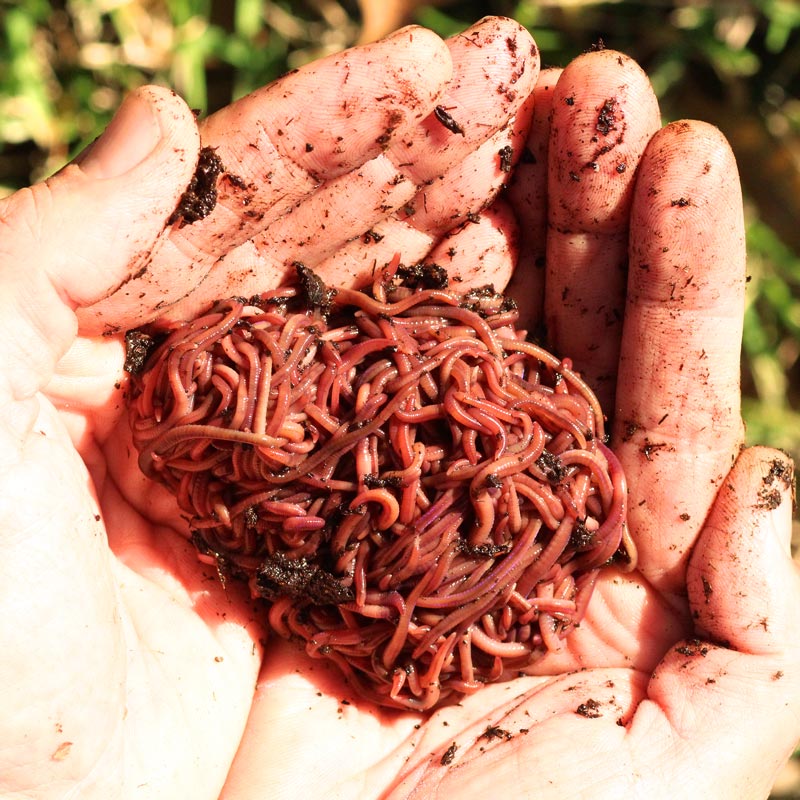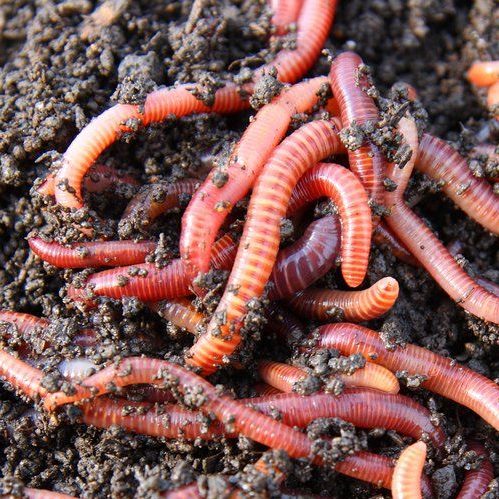Red Wigglers: The Unsung Heroes of Organic Waste Recycling
Red wigglers, or Eisenia fetida, work as critical representatives in the natural waste reusing procedure, transforming disposed of products right into useful vermicompost. Their efficient break down of raw material not only boosts soil quality but likewise contributes to sustainable waste administration methods. As the world progressively looks for remedies to combat waste accumulation and boost farming efficiency, comprehending the function of these worms ends up being vital. What devices allow them to grow in garden compost settings, and exactly how can they be successfully made use of in both household and industrial settings? Checking out these inquiries discloses the wider ramifications of vermicomposting in our ecological landscape.
What Are Red Wigglers?
The amazing resilience of red wigglers, medically called Eisenia fetida, highlights their critical function in organic waste recycling. These small, reddish-brown earthworms are commonly discovered in breaking down organic matter, such as compost heap and manure lots. Lake Hickory Bait. Unlike other earthworm types, red wigglers flourish in nutrient-rich settings and are extremely reliable at breaking down organic products, making them vital for vermicomposting

(Lake Hickory Bait)Along with their role in waste reduction, red wigglers add to soil wellness by improving dirt framework and oygenation through their burrowing activities (Lake Hickory Bait). Their visibility in composting systems not only improves disintegration rates however also advertises a lasting technique to waste monitoring, highlighting their relevance in eco-friendly preservation efforts
Advantages of Composting With Worms
Composting with worms, particularly red wigglers, supplies countless benefits that boost both waste management and dirt wellness. These worms efficiently break down natural waste, converting it into nutrient-rich vermicompost that enhances soil. This process speeds up decomposition, allowing for a quicker recycling of cooking area scraps and various other natural materials compared to conventional composting methods.
In addition, the vermicompost produced by red wigglers is teeming with valuable bacteria, which assist enhance dirt structure, aeration, and wetness retention. This enhances the overall health and wellness of plants, advertising strenuous growth and boosted yields in yards and agricultural setups. The usage of worms in composting reduces the production of greenhouse gases, such as methane, adding to a more lasting waste administration system.

Exactly How to Start Vermicomposting
Developing a vermicomposting system is an uncomplicated process that can generate substantial benefits for both waste administration and soil enrichment. To start, choose an appropriate container, such as a plastic bin or wood box, with appropriate ventilation openings to make certain correct air flow. The measurements must preferably be about 2 feet by 3 feet, enabling adequate room for the worms to thrive.
Following, prepare bedding material, which can be composed of shredded newspaper, cardboard, or coconut coir. This bed linen needs to be moistened to create an appropriate environment for the worms. When the bed linen is in area, introduce red wigglers (Eisenia fetida) into the bin, generally around one pound of worms for every square foot of area.
Complying with the positioning of worms, include natural waste, such as vegetables and fruit scraps, coffee premises, and crushed eggshells. Avoid adding milk, meat, or oils, as these can develop smells and bring in parasites. Ultimately, place the container in a shaded, temperature-controlled area to keep ideal conditions for worm activity. With these steps, you will efficiently start a vermicomposting system that contributes to sustainable waste monitoring and improves your soil.
Preserving a Healthy Worm Container
(Red Wiggler Express)Maintaining a worm bin thriving requires routine attention and treatment to guarantee the wellness of the red wigglers and the effectiveness of the composting process. Correct maintenance starts with keeping an eye on the wetness levels; the bin should perspire but not soaked. A great general rule is to keep a consistency similar to a wrung-out sponge.
Aeration is critical. Gently blending the bed linens and food scraps every few weeks prevents compaction and guarantees that all worms have accessibility to oxygen. Additionally, it is crucial to feed the worms suitably. A balanced diet plan of vegetables and fruit scraps, coffee grounds, and crushed eggshells must be offered in moderation to prevent overfeeding, which can cause smells and parasites.
If the bin becomes too hot or cold, the worms may end up being stressed out. By carefully handling these factors, one can maintain a robust and effective worm container.
Influence On Sustainable Living
The effective upkeep of a worm bin not only profits the health and wellness of red wigglers however likewise contributes substantially to see this page sustainable living practices. By reusing organic waste, such as kitchen area scraps and backyard particles, red wigglers help draw away significant quantities of material from land fills. This reduction in waste not only decreases greenhouse gas discharges however likewise minimizes the ecological concern related to waste administration.
Moreover, the spreadings created by red wigglers work as a nutrient-rich natural fertilizer, boosting dirt health and wellness and promoting plant development. This all-natural alternative to chemical plant foods supports lasting agriculture and horticulture techniques, decreasing dependence on artificial inputs that can harm communities. Additionally, worm composting cultivates awareness of waste management, urging individuals and communities to adopt more lasting practices.

Verdict
In summary, red wigglers function as important contributors to natural waste reusing through their efficient decay of organic materials. Their capability to produce nutrient-rich vermicompost improves soil health and wellness and sustains lasting farming methods. By incorporating vermicomposting right into waste administration approaches, people and areas can dramatically lower waste while advertising ecological sustainability. The function of Eisenia fetida in promoting healthy ecological communities highlights the value of these organisms in accomplishing sustainable living and enhancing soil fertility.